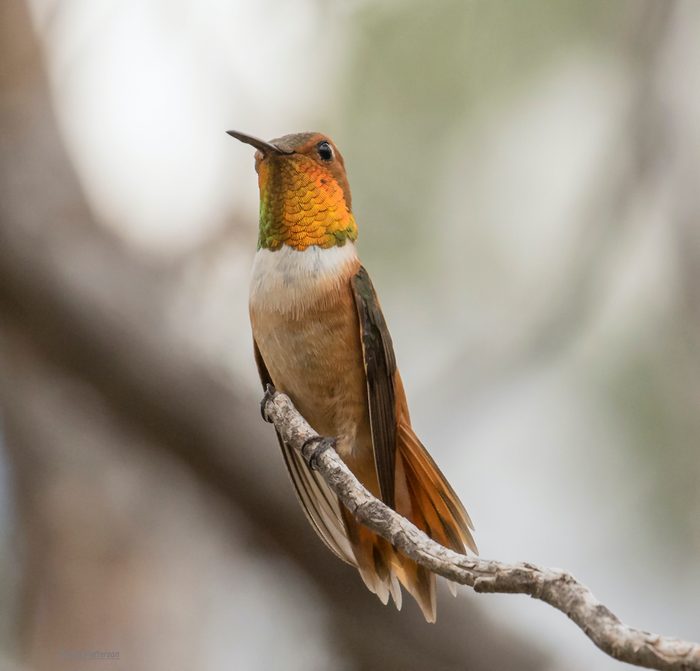
Hummingbirds in Texas: Rufous Hummingbird
These rust-colored hummingbirds in Texas migrate through the westernmost quarter of the state on their way to their northern breeding grounds. Known for their ferocious attitudes, rufous hummingbirds are notoriously territorial and will pick a fight with just about any bird—or, for that matter, anything—that dares invade their space.
Setting their notable tempers aside, rufous hummingbirds are plenty cute. Their reddish-orange plumage and mossy-colored throats set them apart from the other hummingbird species that pass through Texas. You might draw one to a hummingbird feeder. Then it’ll likely defend that feeder against as many other hummers as it can.
Discover 22 jaw-dropping hummingbird facts.
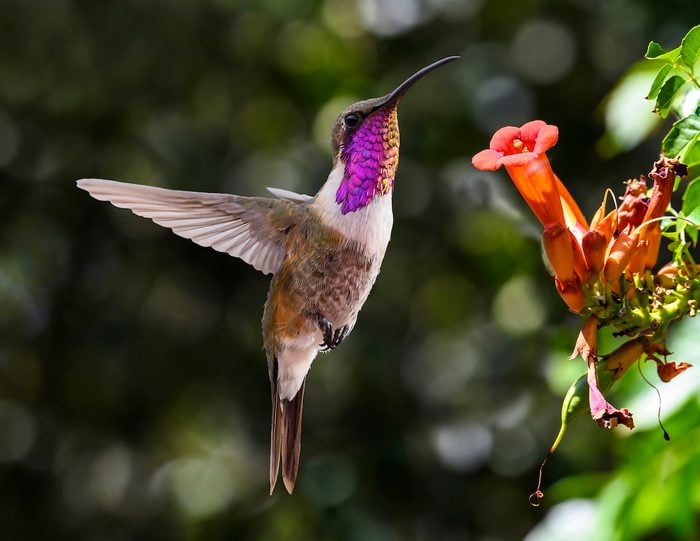
Lucifer Hummingbird
This adorable little bird with an eyebrow-raising moniker only stops by Texas during breeding season. Even then, it only appears in a select area along the state’s southwest border with Mexico. Spotting one is no easy feat!
That said, it’s not too tricky to identify a Lucifer hummingbird. Its muddy green plumage and purplish gorget, paired with a black, curved bill, make it a relatively easy I.D. Extremely lucky birders within their limited range might be able to draw them to sugar-water feeders.
Become a hummingbird expert by identifying the 15 types of hummingbirds found in the United States.
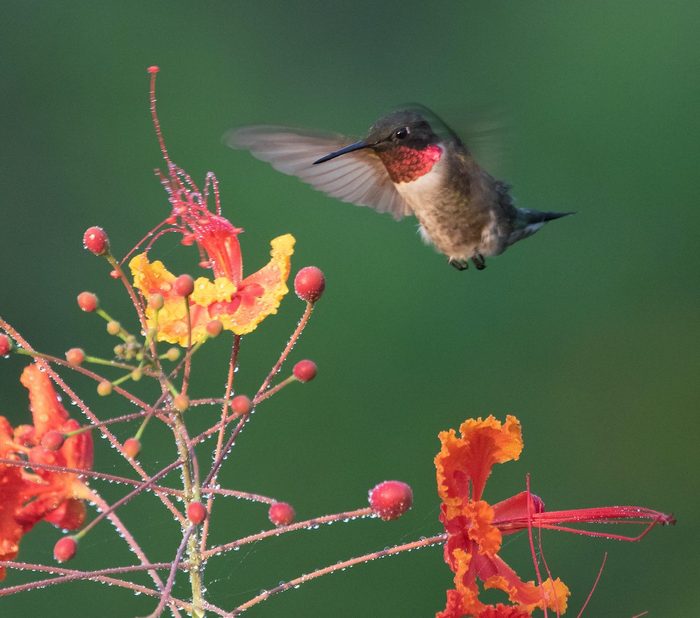
Ruby-Throated Hummingbird
The classic hummingbird of much of North America, ruby-throated hummingbirds zip through Texas both during migration and breeding season. The central third of the state will see them only as they pass through to northern breeding grounds, while the eastern third will keep its ruby-throats for breeding season.
The classic method of I.D.’ing a ruby-throated hummingbird is, of course, its ruby-red throat. Aside from that, birders should look for its vibrant green feathers and white breast, as well as its greenish underparts.
Hummingbird males vs females: find out how to tell the difference.
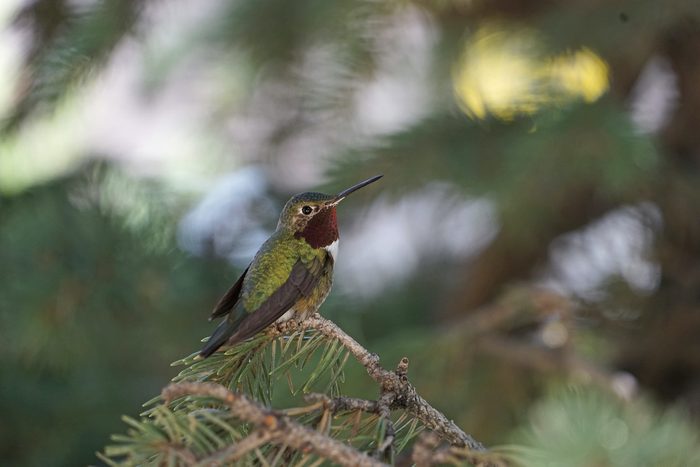
Broad-Tailed Hummingbird
If you live in Texas, you still might have to travel in hopes of finding a broad-tailed hummingbird. They visit the state in only a handful of specific areas, both on the state’s western border with Mexico. They prefer meadows and woods during breeding season.
It might be tempting to confuse a broad-tailed with a ruby-throated hummingbird based on looks alone, but their ranges don’t overlap. Birders can pick them out based on their pinkish-red throat and shimmery green feathers.
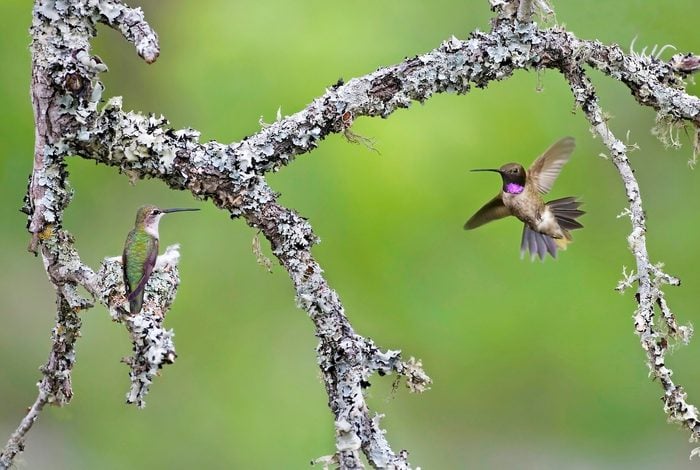
Black-Chinned Hummingbird
Plenty of Texas residents have the opportunity to find a black-chinned hummingbird during its breeding season. The birds migrate up from Mexico to much of Texas’ southern half, as well as a wide area in on state’s eastern side. According to Houston Audubon, these hummers might appear in gardens and anywhere boasting flowers they like.
Black-chinned hummingbirds typically appear in Texas during the winter where, as Houston Audubon notes, they’re commonly mistaken for ruby-throated hummingbirds. Telling the difference might take a good look. Unlike the ruby-throat, the black-chinned hummingbird’s gorget is purple—but most of the time, it looks black.
Why do hummingbirds migrate? Our experts answered common questions about hummingbird behavior.
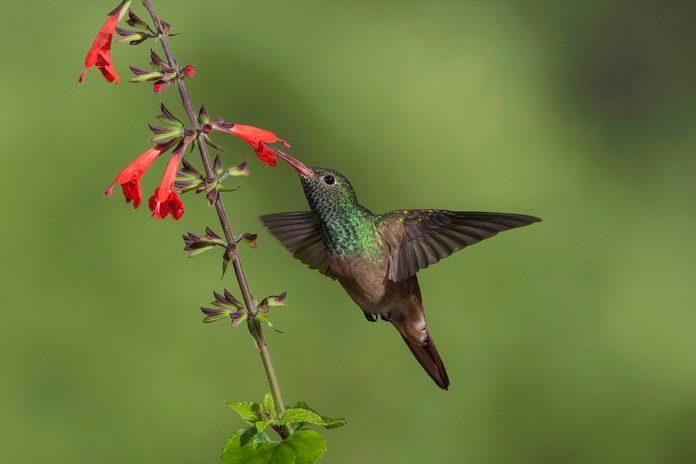
Buff-Bellied Hummingbird
Texas sees the buff-bellied hummingbird during both its breeding season and, in parts of the state, year-round. The southern tip and a patch along the bottom border both have the birds all year, while the rest of the state that borders the Gulf of Mexico only see buff-bellieds during the nonbreeding season.
It’s not too tricky to I.D. a buff-bellied hummer; classic features to look for are a reddish bill with a black tip, and a rusty-colored belly. The bird’s back and head boast similar green plumage to the ruby-throated hummingbird. Buff-bellieds will visit feeders, so those living in their range might put out some sugar water in hopes of drawing one to their yards.
Meet the Calliope hummingbird—the smallest bird in the U.S.
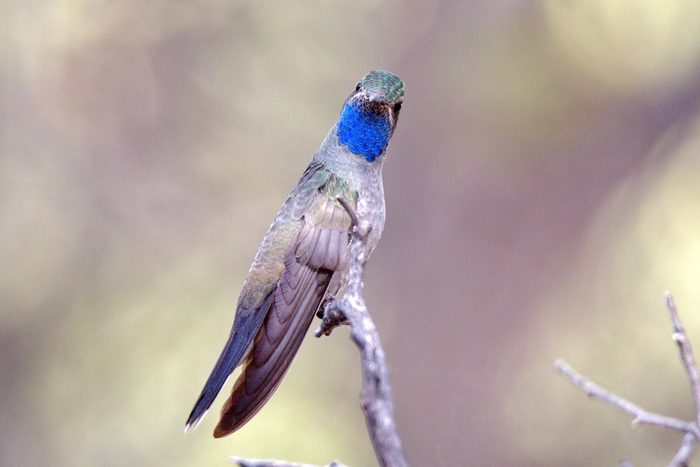
Blue-Throated Mountain Gem
Spotting a blue-throated mountain gem in Texas might be tricky! While they have a decent range in the southeast corner of Arizona with some overlap in New Mexico, Texas only houses these delightful hummers in two spots. You might glimpse them near the state’s southeastern border, or on the southernmost border between Texas and New Mexico.
Blue-throated mountain gems only travel into the United States for breeding season, and they prefer woodland habitats. Amusingly, they’ll build nests on everything from branches and rock ledges to houses. These hummingbirds are easily identifiable by their stunning blue gorgets.
Find out which hummingbirds you can spot in California.
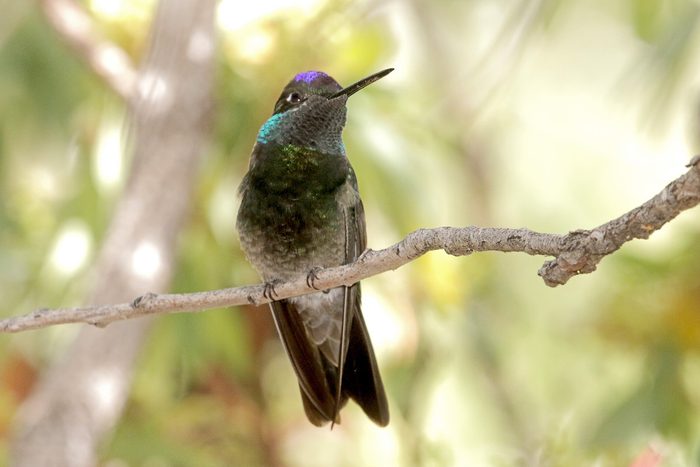
Rivoli’s Hummingbird
Rivoli’s hummingbirds aren’t a typical Texas visitor. Technically, the state falls outside their “common” range. But if you’d like to take a chance on seeing one, there are a handful of places near the west side of the state (bordering Mexico and New Mexico) where they sometimes appear during breeding season. To have a better chance at finding a Rivoli’s, it might be worth taking a trip to New Mexico or Arizona. They’re commonly spotted in those states during breeding season.
Next, learn how to identify a Costa’s hummingbird.
